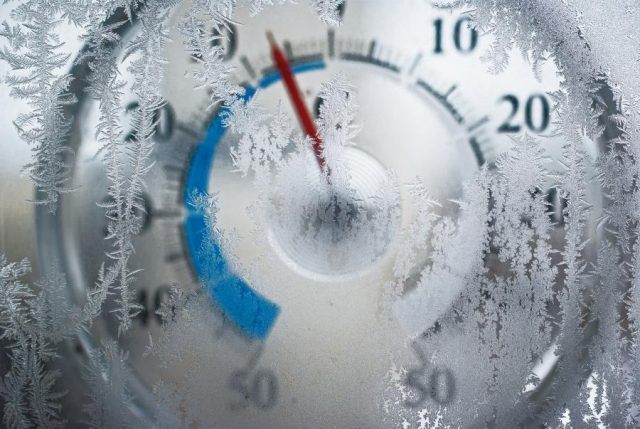You do not a weatherman to tell you it is cold outside as it is the first thing most of us are thinking when we step outside this week. The National Weather Service has confirmed that yes, in addition to it being cold out, it’s not going away any time soon. Town officials are asking folks to remember to dress warmly and check in on elderly neighbors or those with functional needs to make sure they are safe.
An arctic air mass will bring potentially life-threatening wind chills and near record cold temperatures and even colder wind chills, which can cause frostbite in as little as 30 minutes to exposed skin. Expect wind chills to range from 15 above zero to 15 below zero over the next several days.
The Brookline Emergency Management Team is urging residents to take precautions if you must go outside, including dressing in layers and make sure your car is equipped with a cold weather gear and an emergency kit to avoid serious health issues that can come with prolonged exposure to such cold.
If you need a warming center, head to the public library (though those close at night and will not be open on New Year’s Day. Or the Public Safety Building (Aka the police station on Washington Street.)
Some handy tips:
- Dress in several layers of loose-fitting, lightweight clothing, rather than a single layer of heavy clothing. Wear a hat, mittens (rather than gloves mittens will keep your fingers warmer) and sturdy waterproof boots, protect your extremities and cover your mouth with a scarf to protect your lungs.
- Watch for signs of frostbite and hypothermia: Frostbite causes a loss of feeling and a pale appearance in extremities, such as fingers,toes, ear lobes or the tip of the nose. If symptoms are detected, seek medical help immediately. The warning signs of hypothermia include uncontrollable shivering, memory loss,disorientation, incoherence, slurred speech, drowsiness and apparent exhaustion. If the person’s temperature drops below 95 degrees, seek immediate medical care.
- Have a well-stocked Home Emergency Kit that includes a flashlight, sleeping bag or blanket, portable radio, extra batteries, a first aid kit, bottled water and non-perishable food.
- Keep the gas tank at least half-full. Carry Winter Emergency Car Kit, which includes blankets, extra clothing, a flashlight with spare batteries, a can, waterproof matches (to melt snow for drinking water), non-perishable foods, windshield scraper, shovel, sand, tow rope, and jumper cables in the trunk. Limit outdoor time for your pets. Freezing temperatures are dangerous to animals as well as humans.
- Ensure you have sufficient heating fuel, as well as alternate emergency heating equipment in case you lose electricity. When utilizing alternate heating sources, such as an emergency generator, your fireplace, wood stove or space heater, take necessary safety precautions:
- Keep a fire extinguisher handy and ensure everyone knows how to use it properly.
- Never heat your home with a gas stove or oven or charcoal barbecue grill.
- Make sure all heating devices are properly ventilated and always operate a generator outdoors and away from your home. Improper heating devices can lead to dangerous carbon monoxide (CO) buildup in the home. Make sure you test smoke alarms and carbon monoxide detectors. Carbon monoxide is an odorless, colorless gas that can cause flu-like illness or death. If you suspect carbon monoxide poisoning, call 9-1-1 immediately, get the victim to fresh air, and open windows.
- If you do not have an alternate heating source, trap the existing heat by sealing off unused rooms by stuffing towels in the cracks under the doors. At night, cover windows with extra blankets or sheets.
- Wrap pipes in insulation or layers of newspapers covered with plastic to keep them from freezing. Allow a trickle of warm water to run from a faucet that is farthest from your water meter or one that has frozen in the past. This will keep the water moving so that it cannot freeze.
- If pipes freeze, remove insulation, completely open all faucets and pour hot water over the pipes or wrap them with towels soaked in hot water, starting where they are most exposed to the cold. A hand-held hair dryer, used with caution, also works well.

















